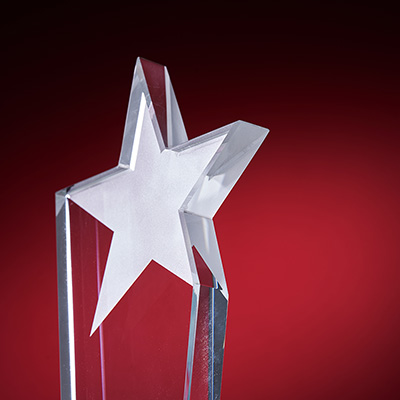Industry observations from the 2023 Best Fleets to Drive For evaluation
Published on February 21, 2023
In the 15th anniversary edition of the Best Fleets to Drive For evaluation, we see the ongoing driver shortage boosting the evolution of fleets. This year, drivers nominated 165 companies to be named Best Fleets. We conducted 109 interviews, with 95 fleets becoming Finalists and entering the scoring phase. Those Finalists had 9,434 driver surveys completed, giving us a pulse on how drivers are feeling and what is happening in the industry.
With 15 years of observations to draw on, and over 5,300 distinct answers in the questionnaires, we've seen some changes in the industry, driver satisfaction and company programs. Here are a few of our observations for 2023.
New Entrant Programs
With the driver shortage being felt from coast to coast, carriers are finding new ways to entice potential drivers into the market, and onto their payroll. This year, we saw more fleets opening their own driving schools, and partnering with local schools. Those that choose to partner with driving schools, do so to get their pick of the graduates. One fleet told us that they buy a pizza lunch for every graduating class of drivers from local schools, just to get their name in the minds of the future drivers.
It has become commonplace to have new entrant programs at carriers, even the ones who told us in previous years that their insurance would never allow it. Training programs can range dramatically in duration and steps, with every possible combination of coaching, shadowing, mentoring, simulator use, and follow-ups imaginable. But one thing is clear, carriers have realized they need to find ways to get new drivers into the industry and get drivers thinking about working for them.
Orientation
Orientation programs have been evolving over the years. From down and dirty basics, to a more elaborate full day, and even some hosting a multi-day, off-site event, no two fleets handle orientation the same way. We have noticed that having some of the orientation handled online before coming into the terminal is more common, but fleets also offer the option to do it all in house. There's still a split of those that pay for orientation and those who don't. For those that pay, $213/day is the average. We're also seeing more companies getting executives involved in the orientation process, from having a meal with them, to a casual meet and greet. Lastly, several companies have moved to a process using a short initial orientation with a follow-up session later on to re-establish standards and allow drivers to ask questions.
Beyond the Sign-on
Sign-on bonuses have become common, but they're treated more like "come and stay" bonuses, with a partial payment up front, and the rest paid out in installments, based on how long a driver stays. While sign-on bonuses might get drivers in the door, the best fleets are ensuring they keep them with upgraded terminals, minimized maintenance downtime or free inspections, pet and passenger programs, and mentoring to help keep people connected and make assistance available at all times.
Satisfaction Down
Drivers were notably less satisfied this year than in the past. After 2 years of pandemic-related special treatment, the return to normal operations has created greater restlessness than we've seen since the Great Recession. There is a definite correlation between satisfaction and technology - where new tech is being used (dash cams, ELDs), satisfaction with person-to-person interactions is down (career paths, feedback, coaching and mentoring). Last year, we noticed this trend of dissatisfaction with tech, and it seems to be getting worse.
Driver satisfaction is lowest in the following areas:
- Driver input into new tech or vehicles
- Opportunities to provide input into business operations (through townhalls, advisory boards, etc.)
- Time wasted at shipper locations and the time that it takes shipper problems to be resolved
- Coaching/mentoring programs
- Connection between job performance and compensation/usefulness of performance feedback
- Compensation for additional work
- Clearly identified career paths
While Best Fleets finalists and winners continue to have strong driver satisfaction overall, it's lower than it was a year or two ago.
Continual Evolution in the Hall of Fame
Over 15 years of evaluating fleets, we have seen some companies that continually evolve. These fleets listen to their drivers, make changes accordingly, anticipate what might be coming, and have the processes in place for ongoing success. Regardless of size, any fleet can be driver-centric, with a culture based on mutual respect.
This year we celebrate 10 years of Bison Transportation, Central Oregon Truck Company, and TransPro Freight Systems being in the Top 20 Best Fleets to Drive For. The Best Fleets to Drive For Hall of Fame was created to recognize those consistently high performing fleets who have made it into the Top 20 for 10 consecutive years, or 7 consecutive years plus an overall award. There were 8 fleets in the inaugural Hall of Fame and they all had to requalify to return to the Hall of Fame this year. No fleet can stay in the Hall of Fame unless they constantly up their game, and every one of our initial 8 Hall of Fame inductees have done that, along with the new fleets being inducted this year - Garner Trucking and TransPro.
If you want to know how to become a Best Fleet to Drive For, look at what these fleets are doing - that will give you a good road map to getting the drivers you need, keeping them happy, having a great workplace, and joining the Top 20 in our next edition of the Best Fleets to Drive For.
For more tips and information about the process, view our Best Fleets podcasts at https://www.bestfleetstodrivefor.com/media.
For best practices from last year's program, visit https://www.bestfleetstodrivefor.com/. Our 2023 Results Book will be posted in early March. It's full of trends we have observed during the 2023 edition of the Best Fleets to Drive For.
For all the latest Best Fleets events, visit the Best Fleets to Drive For Facebook page, at https://www.facebook.com/BestFleetsToDriveFor.







